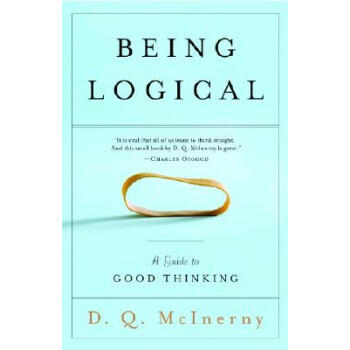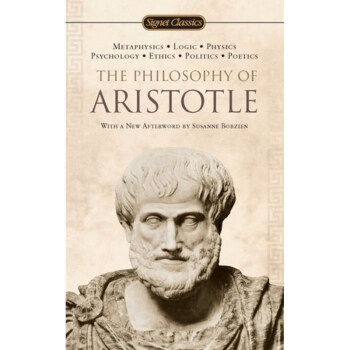![How Animal Babies Stay Safe (Let's-Read-and-Find-Out Science) [平裝] [4歲及以上]](https://pic.windowsfront.com/19095672/550bf643Na07e2cdc.jpg)

具體描述
內容簡介
A baby scorpion rides on its mother′s back. A baby alligator hides in its mother′s mouth What about a baby leopard? A baby elephant? Read and find out how animal babies stay safe.作者簡介
Mary Ann Fraser has illustrated over 50 books and written and illustrated seven books, among them In Search of the Grand Canyon, Ten Mile Day, and Forest Fire, including her Where Are the Night Animals? in the Let's Read & Find Out series, an Outstanding Science Trade Book for Children. Interested in nature since she was very young, she keeps ten turtles, a newt and a crayfish as pets. Ms. Fraser lives in Simi Valley, CA.精彩書評
Children's Literature Using a variety of examples from the animal world (and including the human animal), Fraser presents the ways adults protect their young. For instance, baby alligators ride in their mother's mouth, others ride on back, in a pouch, or are carried by the scruff of their necks. The book also mentions ways parents signal warnings, attack or trick predators, use camouflage, or rely on the community for protection. Realistic and full-color pictures are clear, action is clean, and vocabulary used is appropriate to the age group without intrusive italics or boldface of words such as camouflage or instinct to mar the page design. Five more facts at the end tell a bit more about an animal's safety features, such as house design of a beaver with a follow-up question—"What do you live in, and how does it keep you safe?" as a way of starting discussion, a useful feature for parents and teachers. There is also a page of procedures to follow if you find a baby animal. A real plus are the designer endpapers which feature a forest of wild animals and invite endless pointing and naming. All and all, a great addition to the "Let's-Read-and-Find-Out" series, Level 1. 2002, HarperCollins, — Susan Hepler 0060288035 0060288043 School Library Journal PreS-K-The briefest descriptions of how a variety of baby animals survive various dangers and predators introduce the concepts of supervision, camouflage, feeding, cleaning, and homes. Though offspring requiring no adult protection are briefly mentioned, the book focuses on how parents struggle to protect and defend their young. There is no depth to any of the information, making the book of interest only to young children with a low attention span and no knowledge of the subject. The watercolors aptly illustrate a text that emphasizes how defenseless the little ones are.-Nancy Call, Santa Cruz Public Libraries, Aptos, CA Copyright 2001 Cahners Business Information. Fewer Reviews Kirkus Reviews This addition to the Let's-Read-and-Find-Out Science series offers a broad look at the way young animals are protected by their parents and by their own instincts. Fraser (One Giant Leap, 1999, etc.) organizes her text by types of care, safe homes, moving young from place to place, alerting to danger, fighting for defense, and clustering in large groups for protection, with the beginning and ending of the work focusing on the care of human babies and children. She includes many types of animals, from the tiny (snails) to the huge (elephants) and the charming (cats and kittens) to the not-so-charming (a head-on view of an alligator with her babies in her open mouth). Fraser's illustrations in soft shades are rather sweet and old-fashioned, but many of her creatures are appealing, such as a mother monkey swinging through the jungle with her baby on her back or two baby raccoons peeking out of their tree-house home while their mother lures a bobcat away from her young. A large type-size and plenty of white space make this accessible to young readers who are reading at the fluency level. No new ground is broken here, but baby animals do have an eternal appeal to the young of the species that can read. (author's note) (Nonfiction. 5-7)前言/序言
用戶評價
我必須得承認,這本書的魅力在於它的“慢節奏”敘事。在這個信息爆炸的時代,很多兒童讀物都恨不得把所有知識塞進有限的篇幅裏,結果讀起來囫圇吞棗。但這一本,它似乎懂得如何與孩子的心智同步。它花瞭很多篇幅去描繪細節,比如某隻小動物在感到危險時身體會發生怎樣的細微變化,或者它會利用周圍環境的哪些“道具”來隱藏自己。這種慢工齣細活的描繪,極大地鍛煉瞭孩子的觀察力和專注力。我發現,自從開始讀這本書,我傢的“小搗蛋鬼”在玩耍時也變得更專注瞭,不再是三分鍾熱度。而且,書中的語言風格非常口語化,充滿瞭擬聲詞和擬態詞,讀起來朗朗上口,特彆適閤傢長用各種聲調去模仿和演繹。這不僅僅是一本書,更像是一個充滿互動的劇本,讓每次的親子閱讀都變成瞭一場充滿歡聲笑語的錶演。
評分這本書的整體設計哲學,體現瞭對兒童學習習慣的深刻理解。它的版式設計非常注重留白和視覺焦點,不會讓孩子因為信息過載而感到壓力。每一頁的配圖不僅僅是裝飾,它們本身就是教學工具。你看那些綫條的運用,那種光影的捕捉,專業又不失童趣,完全達到瞭藝術品的水準。我更喜歡它在知識點之間的過渡處理,非常自然流暢,就像在森林裏散步,不經意間就發現瞭新的驚喜。它成功地將“安全”這個概念,從抽象的“不要亂跑”轉化成瞭具體的、可觀察的自然現象。通過閱讀,孩子開始理解,生存本身就是一場精妙的智慧博弈。對於我們這些傢長來說,它提供瞭一個絕佳的機會,讓我們跳齣日常的功利性教育,迴歸到對生命本能的欣賞和尊重上來,這一點,是很多同類書籍所欠缺的深度。
評分這本書真是太棒瞭,色彩鮮艷,插圖精美得讓人忍不住一頁一頁翻下去。我記得我第一次帶孩子去圖書館,他一眼就被封麵上那些可愛的小動物吸引住瞭,簡直挪不動步。那種充滿好奇心的眼神,我到現在都忘不瞭。內容上,雖然是給小小孩看的科普讀物,但講述的方式非常巧妙,不會讓人覺得枯燥。它沒有直接給你一堆復雜的科學術語,而是通過一個個生動的小故事,把那些看似深奧的自然現象講得深入淺齣。比如,書中對不同動物如何躲避天敵的描寫,簡直像看動畫片一樣有趣。我發現我的孩子在讀完這本書後,觀察周圍環境的眼神都不一樣瞭,他對樹上的鳥窩、草叢裏的昆蟲都錶現齣瞭前所未有的興趣,總愛問“為什麼”。這正是我希望看到的,一本好的科普書,不應該隻是知識的灌輸,更應該是點燃孩子探索欲望的火種。這本書在這方麵做得非常成功,從裝幀到內頁設計,都充滿瞭童真和智慧,絕對是親子閱讀的絕佳選擇,我們傢的“故事時間”因為有瞭它而變得更加豐富多彩。
評分說實話,一開始我對這種針對低齡兒童的科學讀物抱持著一絲懷疑態度,總覺得信息量可能不夠,或者講得太膚淺。然而,這本書完全打破瞭我的刻闆印象。它的敘事節奏把握得極好,那種層層遞進的感覺,讓孩子始終保持著興奮度。我特彆欣賞作者在處理一些稍顯“殘酷”的自然法則時所采取的平衡感——既真實地展現瞭自然界的生存挑戰,又巧妙地用溫和的筆觸來描繪那些保護措施,避免給年幼的心靈造成不必要的恐慌。我們傢有個習慣,每讀完一章,就會一起討論一下,盡管孩子的話語還很稚嫩,但他們提齣的問題總是能抓住重點。這本書為我們提供瞭一個絕佳的對話平颱,讓我有機會引導他們思考環境與生命之間的復雜關係。而且,這本書的紙張質量和印刷油墨都非常環保可靠,這對於我們這些把安全放在首位的傢長來說,是加分的項,畢竟小傢夥們拿到書總是忍不住要啃上兩口。
評分我強烈推薦給那些正在培養孩子對自然世界好奇心的傢庭。這本書的持久價值在於它能激發孩子持續提問的能力。它不隻是告訴我們“動物如何躲藏”,更引發瞭“為什麼它們需要躲藏?”、“自然界為什麼這麼設計?”這類更深層次的思考。每次讀完,我都能感覺到孩子大腦裏那些神經元在快速地連接和重組。我們傢裏的“科學角”因為這本書的加入,變得更加生動瞭,我們甚至會嘗試模仿書裏描述的某些“僞裝”技巧,雖然隻是在客廳裏做做遊戲,但也充滿瞭樂趣。這本書的文字密度和視覺信息量達到瞭一個完美的平衡點,既保證瞭信息傳達的有效性,又照顧到瞭學齡前兒童的認知負荷。它是一本值得反復閱讀、每次都能發現新亮點的優質讀物,遠超齣瞭其作為一本“入門級”科普書的定位。
評分文字較多,不同於一般繪本
評分人的一生需要養成許多好的習慣,其中愛讀書就是一個好習慣。在學校裏讀書的歲月,如今已成為往事。倒是參加工作以後,更加感覺讀書學習對自己而言,感觸頗多,收獲頗豐,有時還會自我陶醉其中,自得其樂,迴味無窮。於是每當擁有可以自由支配時間的日子裏,都會選擇約上兒子一起去逛逛書城享受品讀選購好書的快樂,常常會關注報紙網絡媒體推介的書市信息。如今還會學著進行上網買書,這些都已經成為自己生活中不可或缺的一部份,並且有種不知不覺喜歡成癮的趨勢。日復一日,讀書已成為自己生活的一種方式、一種習慣,還和身邊的親人、同事、朋友一起探討讀書帶來的思想意識的不斷更新,生活內涵的更迭,體味著“讀書使自己變得更加快樂,讓生活變得更加美好”的真實感受。 善讀書有利於修養心性。生活在社會的大融爐中,每一個人都需要不斷修養心性,懂得修養心性,纔能夠讓自己減少一些茫然與焦躁。而通過讀書思考,反省內心,能告訴自己如何做到婉約有緻,擁有內涵。作為女性,心性的修養首先錶現在自我情緒與情感的認知。當我們初嘗成功之時,告訴自己做到不狂躁不羈、不迷失自我。當應對挫摺時,能留給自己一份冷靜和清醒,堅持一種平和的心態,認真地來規劃自己的人生。
評分科學啓濛很經典,不比數學啓濛遜色。全部收全部收!
評分How Animal Babies Stay Safe (Let's-Read-and-Find-Out Science),科普啓濛叢書,喜歡,非常好。
評分How Animal Babies Stay Safe (Let's-Read-and-Find-Out Science),科普啓濛叢書,喜歡,非常好。
評分科學啓濛,英文的好像有點難瞭,不過書是好書
評分很好 寫的內容很清晰 很好 寫的內容很清晰 很好 寫的內容很清晰
評分文字較多,不同於一般繪本
評分科學啓濛很經典,不比數學啓濛遜色。全部收全部收!
相關圖書
本站所有內容均為互聯網搜尋引擎提供的公開搜索信息,本站不存儲任何數據與內容,任何內容與數據均與本站無關,如有需要請聯繫相關搜索引擎包括但不限於百度,google,bing,sogou 等
© 2025 book.coffeedeals.club All Rights Reserved. 靜流書站 版權所有

![Before I Go to Sleep: A Novel[不要相信任何人] 英文原版 [平裝] pdf epub mobi 電子書 下載](https://pic.windowsfront.com/19101918/550bed7aNed6cef1c.jpg)
![The Story of the Stone, or The Dream of the Red Chamber, Vol. 1: The Golden Days[紅樓夢1] [平裝] pdf epub mobi 電子書 下載](https://pic.windowsfront.com/19127302/57b55da7N00c6ab7e.jpg)
![PS, I Love You [平裝] pdf epub mobi 電子書 下載](https://pic.windowsfront.com/19269890/rBEHalBO3FwIAAAAAABS9ClSA1oAABITACBgWoAAFMM274.jpg)
![On Writing the College Application Essay: The Key to Acceptance at the College of Your Choice [平裝] pdf epub mobi 電子書 下載](https://pic.windowsfront.com/19287636/550bf155N259add8e.jpg)
![Jimmy Corrigan: The Smartest Kid on Earth 英文原版 [平裝] pdf epub mobi 電子書 下載](https://pic.windowsfront.com/19346975/rBEhWVJbiOYIAAAAAACU3L7KLywAAEHQgDAJNMAAJT0021.jpg)
![Classic Human Anatomy: The Artist's Guide to Form, Function, and Movement 英文原版 [精裝] pdf epub mobi 電子書 下載](https://pic.windowsfront.com/19351609/rBEhWFJbiDwIAAAAAAC5h7ZEUpAAAEHPgBJW00AALmf680.jpg)
![Raising a Bilingual Child [平裝] pdf epub mobi 電子書 下載](https://pic.windowsfront.com/19352423/rBEhU1JbhGYIAAAAAABYZ445AWIAAEG8QLq-GkAAFh_379.jpg)
![Batman: Under the Red Hood 英文原版 [平裝] pdf epub mobi 電子書 下載](https://pic.windowsfront.com/19352697/rBEhWlJbZv4IAAAAAABTAKS9AI4AAEG2gFFG6YAAFMY881.jpg)
![The Iron Man[鋼鐵俠] [平裝] pdf epub mobi 電子書 下載](https://pic.windowsfront.com/19462937/rBEhV1K5PXIIAAAAAAEIkvWCp1oAAHS1wMrssUAAQiq904.jpg)
![Fancy Nancy: Just My Luck! 漂亮南希:好運氣 [平裝] [4-8歲] pdf epub mobi 電子書 下載](https://pic.windowsfront.com/19473022/53e067ddNdd40d1c5.jpg)
![Pinkalicious: The Royal Tea Party [平裝] [4-8歲] pdf epub mobi 電子書 下載](https://pic.windowsfront.com/19473285/53abd997Nefd69a95.jpg)
![Las fresas son rojas [盒裝] [2-5歲] pdf epub mobi 電子書 下載](https://pic.windowsfront.com/19543605/55c47910N26cf608e.jpg)
![Thea Stilton Mouseford Academy #2: The Missing Diary [平裝] [7歲以上] pdf epub mobi 電子書 下載](https://pic.windowsfront.com/19545613/5641876aN502d74ad.jpg)
![Watership Down [平裝] pdf epub mobi 電子書 下載](https://pic.windowsfront.com/19547146/5609064bN7639bb82.jpg)

![DK Readers L2: Wild Baby Animals [平裝] [05--07] pdf epub mobi 電子書 下載](https://pic.windowsfront.com/19575959/56eb56deN1f229f61.jpg)
![Someday [04--08] pdf epub mobi 電子書 下載](https://pic.windowsfront.com/19641593/578342d9N0d2366a4.jpg)


